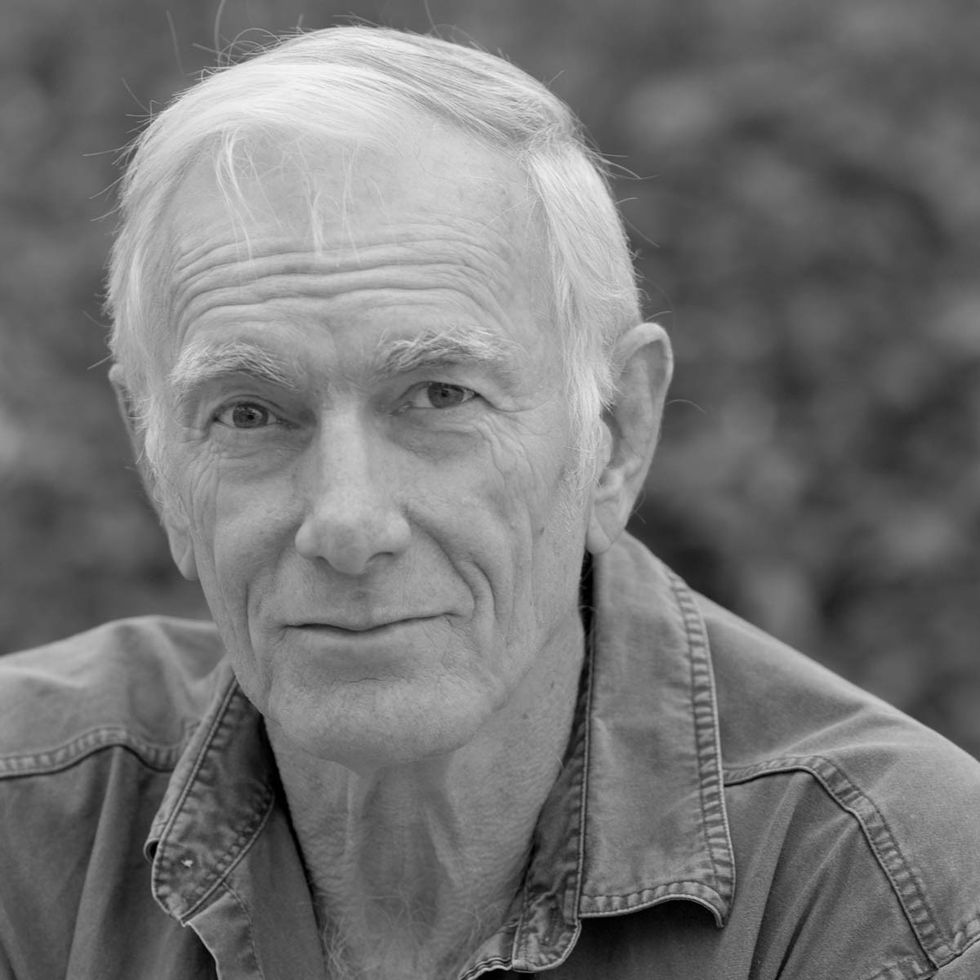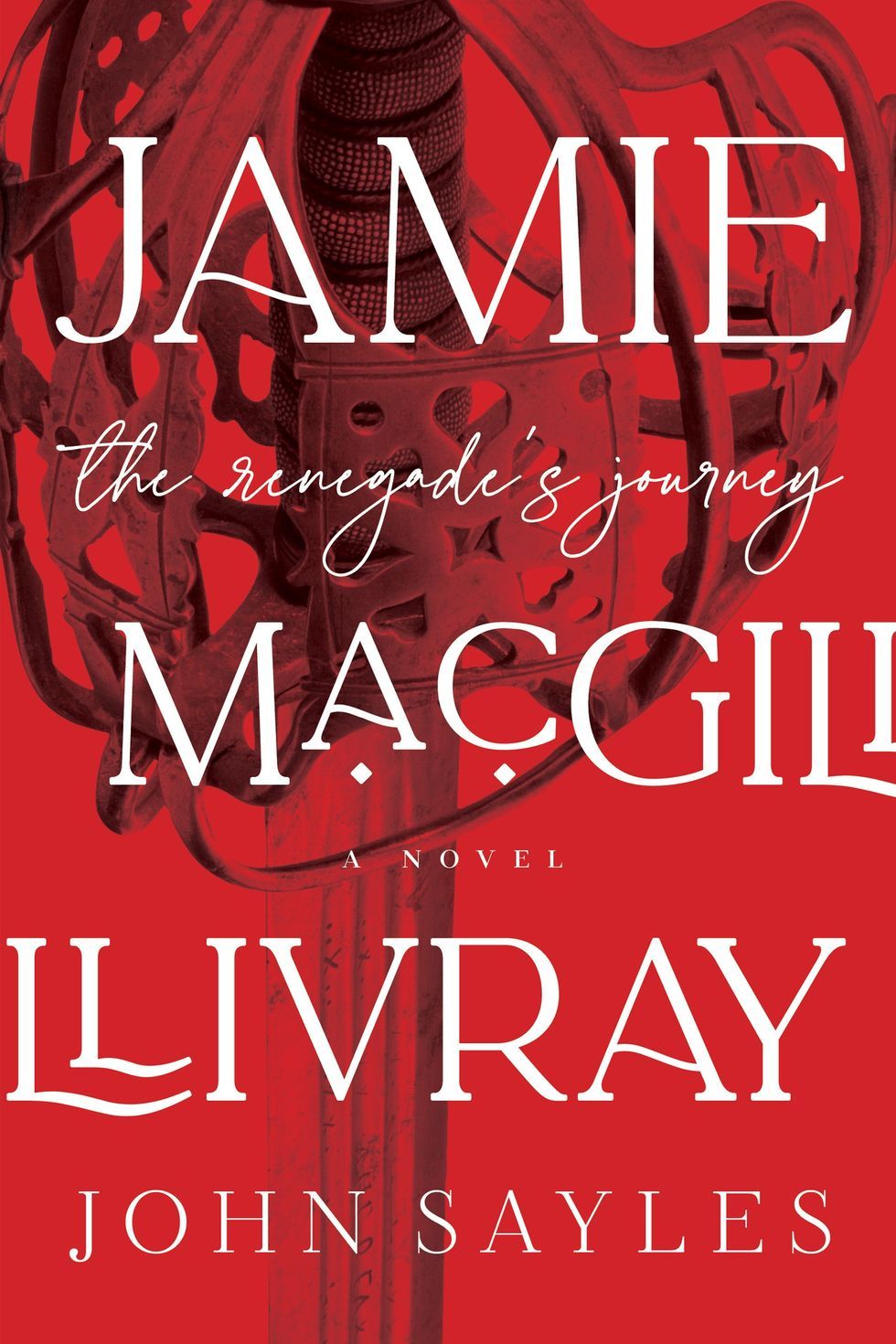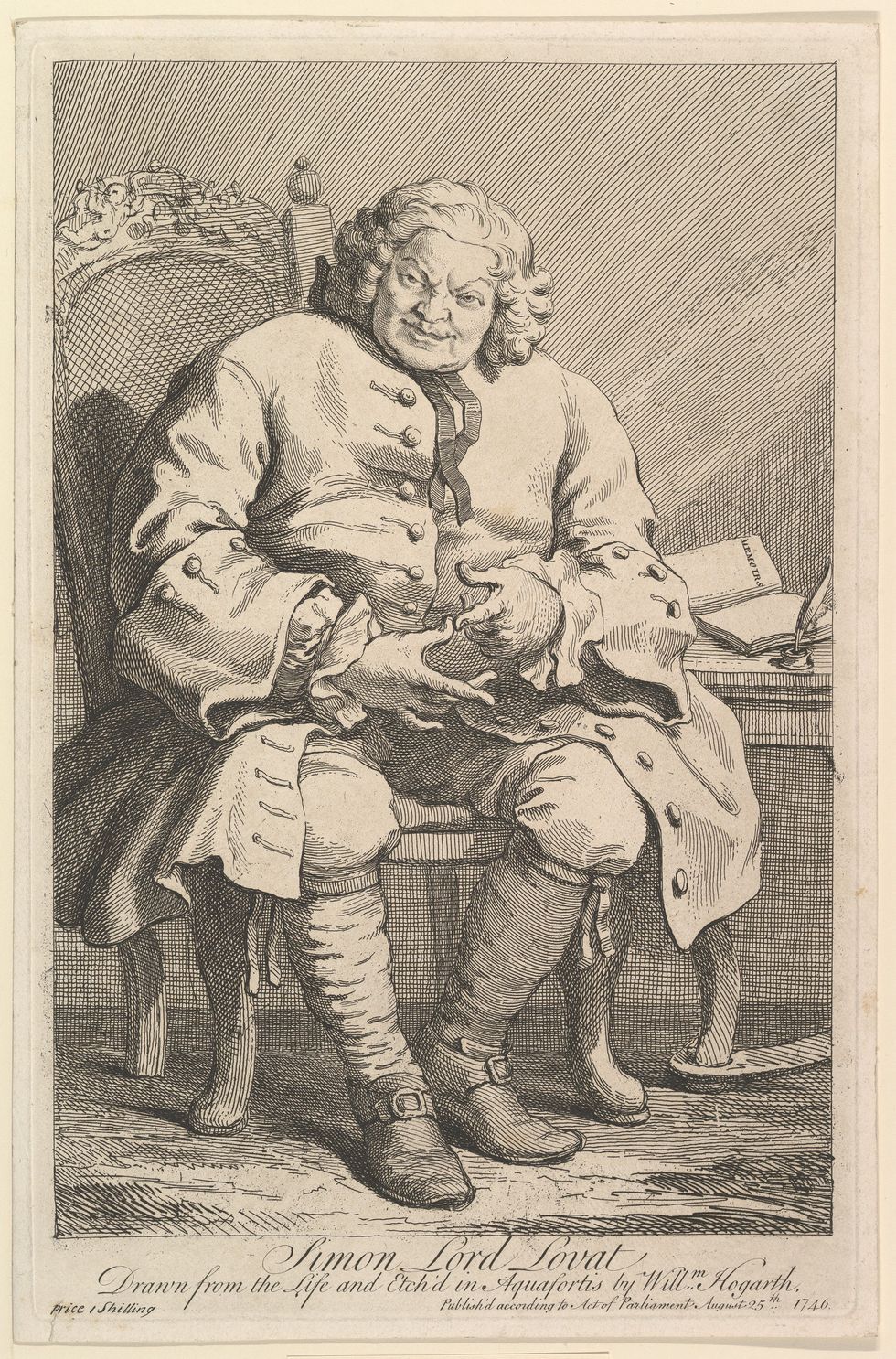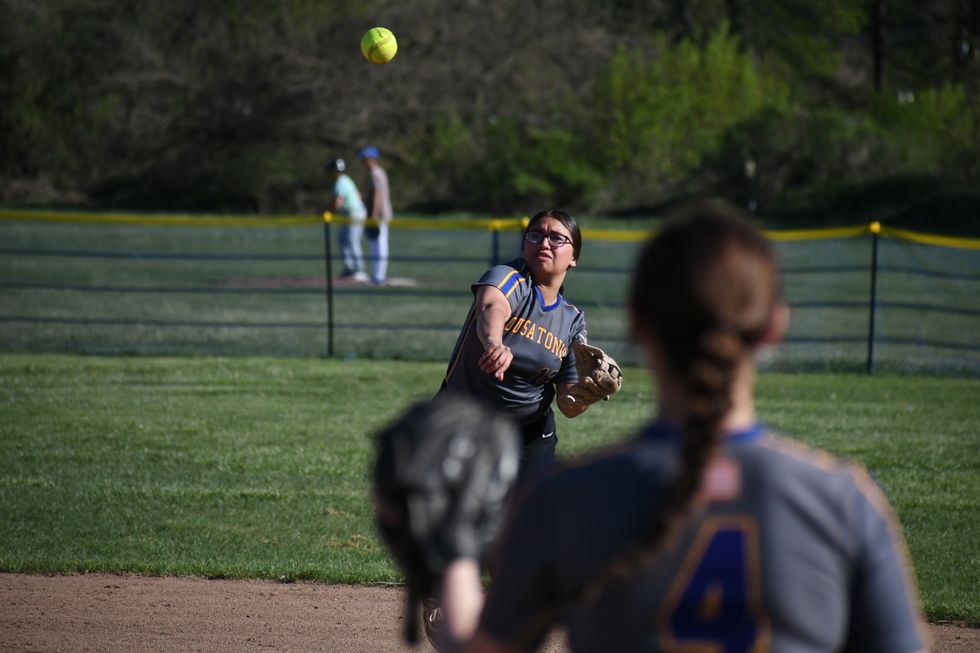
Photo courtesy of Melville House

In his new novel “Jamie MacGillivray: The Renegade’s Journey,” Academy Award-nominated screenwriter John Sayles (“Passion Fish,” “Lone Star”) takes fans of historical fiction on a bloody, decade-spanning romantic odyssey from the blockbuster-style Jacobite battle scenes of the Scottish Highlands to the 18th century colonies of The New World. Sayles spoke with me on the phone from California ahead of a talk he’ll give with WAMC’s Joe Donahue at The White Hart Inn in Salisbury, Conn., on Wednesday, March 15.
Alexander Wilburn: As someone who has written across all mediums, books, film, and television, what brings you back to the novel?
John Sayles: You don’t have to raise money to write a book. Certainly, as a filmmaker, I probably have 10 movies I’ve written that I’ve never been able to raise money for. As a matter of fact, “Jamie MacGillivray” started a screenplay over 20 years ago, at the suggestion of Robert Carlyle, a Scottish actor. I just felt like it was such a good story, I took it up and started thinking about it as a novel. Of course, things always grow when you turn something into a novel. Secondary characters get much bigger and you can do deeper research. When you’re writing for a movie you have to be so aware of time — are we 10 minutes or half an hour into the movie? Very few people sit down and read a novel straight through, so it has a very different rhythm.
AW: How much of the scope of the story changed then compared to the original script?
JS: It always began at The Battle of Culloden and ended with The Battle of Quebec, so it was an ambitious feature. But for instance, Jenny was a pretty minor character who showed up a few times in the screenplay, but when I was doing the research for the story as a book I came across ship logs that did take Jacobite prisoners over to various slave jobs. One of the ships that carried women was taken over by a French privateer before it was able to reach Jamaica, so the prisoners were liberated on the island of Martinique. I thought, first of all, that’s a great way to get Jenny overseas and I eventually wanted to get her to Canada. So if she’s on a French island she can hook up with a French officer and he can get transferred to Canada. As it turns out the research helped me make all of those moves. It’s a little bit like a board game.
AW: This novel is an epic, romantic, often violent saga. I’m always really curious about the prep work that goes into crafting a big novel like this. As an American writer what kind of research did you do to write a convincing narrative about characters from the Scottish Highlands?
JS: The good thing is that the time period is not so old that there’s nothing written about it. In fact, in the first part of the novel, some scenes are verbatim. The minutes of the trial of Lord Lovat were published. Everything that the various barristers said in front of the judge is recreated in the novel. There were records kept by the military of who was killed at Culloden and what clans they were from. There are shipping records of the prisoners who were sent to the New World, and those involved in slave trafficking, so you can look up a certain ship and see how long the voyage took, how much cargo was on it, and how much money they made. In the New World, the colonists were keeping documents — they weren’t necessarily living up to the letter when it came to Native tribes, but a lot of that is documented as well. I can read in French so for a lot of the stuff that happens in Martinique I was able to find books written at the time. I also did a certain amount of reading of the novelists of the time, Dickens and Henry Fielding who wrote “Tom Jones,” and artists like Hogarth who did these series like “The Rake's Progress,” which are full of details. My one rule when I’m working on a book is that I can do research for a week, but then I have to sit and write fiction for a week. Because you can get sucked down the rabbit hole.
AW: Is the pressure to be constantly period accurate to the 18th century something you strive for or do you take creative license for the sake of storytelling?
JS: I find I get much better ideas if I follow what actually happened. So I have a calendar of when things happened and I fit my characters into that calendar. I also get ideas from the technical research — what weapons were they using? How did they operate them? What was the penal code at the time? How did law work? There’s a chapter where there’s a guy who’s afraid of heights, and he gets the job of putting two beheaded prisoner’s heads up on the spikes on the gate and they’re going to sit there for years and years and years — somebody had to do that. So that kind of detail from research gives me ideas. It’s great to not have to make up a plot, the history is pretty rich in itself.
AW: I want to circle back to William Hogarth who appears in the novel. He’s one of the great painters who captured the frenzy and life and emotion of the 18th century. Were his works a source of visual inspiration?
JS: One of the things that he does in his series like “The Rake’s Progress” or “The Harlot’s Progress,” they’re like stories. Every detail, every background person — even if you look at the paintings on the wall they’re commenting on what’s going on. So they’re really rich and novel-like just looking at his pictures. Then there’s the fact that he met Lord Lovat, who had just been captured, to be tried. Eventually Lord Lovat was the last lord ever beheaded by the British, and Hogarth did this beautiful picture of him — he’s as wide as he is tall, and his head looks like a wicked Jack-o'-lantern. He was a notorious character in his day. That was important for my research, knowing there was satiric humor at the time.
AW: You’ll be having a live stream conversation with “Outlander” author Diana Gabaldon, who has become the modern archetypal author of Scottish fiction. This is sort of a “Tale of Jamie's.”
JS: It will be very interesting because I assume we’ve held a lot of the same research in our hands. She started as a researcher before becoming a novelist, so she’s very deft at that. I’m always interested when you start with the same core material what sends you off in these little directions, what strikes you. Years ago I adapted the first novel of “The Clan of The Cave Bear” by Jean M. Auel and I know a little about the research that she did. This was before people knew the Neanderthals and the Cro-Magnons had interbred. She was right about five or six things that hadn’t been proven yet. She said things came to her in a dream. That’s another way of getting your material.

Photo courtesy of Melville House

Detail of Simon Fraser, 11th Lord Lovat by William Hogarth, 1746 Courtesy of The Metropolitan Museum of Art, Gift of Sarah Lazarus, 1891
Haley Leonard and Khyra McClennon looked on as HVRHS pulled ahead of Webutuck, May 2.
FALLS VILLAGE — The battle for the border between Housatonic Valley Regional High School and Webutuck High School Thursday, May 2, was won by HVRHS with a score of 16-3.
The New Yorkers played their Connecticut counterparts close early on and commanded the lead in the second inning. Errors plagued the Webutuck Warriors as the game went on, while the HVRHS Mountaineers stayed disciplined and finished strong.
The sun was beating down as the game got underway in Falls Village. A cloudless sky led to a toasty match between these two teams with temperatures hovering around 76 degrees. Gnats were also hovering around.

Looking to earn its first win of the season, Webutuck got off to a good start. A line drive by Aria Griskauskus brought Ciara “C.C.” Gray home. Housatonic responded with a run in the bottom of the inning to keep the game even through one.
Webutuck retook the lead in the second inning when Abby McEnroe logged an RBI on a bunt. The lead persisted until the bottom of the third inning, when HVRHS took over.
Fueled by powerful hitting and a series of errors by the Warriors, HVRHS piled on four runs in the third to pull ahead 5-2.
The score remained until the fifth inning when the Mountaineers climbed ahead. Haley Leonard got the inning rolling with a solo home run. Abby White sent Hadley Casey home on a single before Kylie Leonard brought White home with a double.
Webutuck scored its third run of the game in the top of the sixth inning. Olivia Wickwire hit an RBI double to bring the score to 8-3.
Housatonic responded by “finding the barrel,” as Coach Pete Foley instructed from third base. The Mountaineers swung for the fences and tacked on eight more runs.

The game ended by a 16-3 decision in favor of HVRHS. The Mountaineers’ record advanced to 7-5 this season while Webutuck moved to 0-8.
“We’re in a good spot,” said Foley on his team’s performance. “We’ve got a chance to be where we want to be, but we need to get more bats going.”
HVRHS was led offensively by Haley Leonard, who hit 4-for-5 at the plate and brought in three RBIs in addition to her solo home run. Grace Riva batted 3-for-5 with three RBIs, Kylie Leonard hit 2-for-3 with two RBIs, Madison Gulotta hit 1-for-4 with two RBIs, and Anne Moran hit 2-for-5 with two RBIs. Anne Moran pitched four strikeouts for the Mountaineers.
For Webutuck, Abby McEnroe went 2-for-4 at bat with one RBI, Aria Griskouskus hit 1-for-3 with an RBI, and C.C. Gray batted 2-for-3. Lyndsay Johnson threw three strikeouts from the hill.

Anthony Foley caught Chase Ciccarelli in a rundown when HVRHS played Wamogo Wednesday, May 1.
LITCHFIELD — Housatonic Valley Regional High School varsity baseball dropped a 3-0 decision to Wamogo Regional High School Wednesday, May 1.
The Warriors kept errors to a minimum and held the Mountaineers scoreless through seven innings. HVRHS freshman pitcher Chris Race started the game strong with no hits through the first three innings, but hiccups in the fourth gave Wamogo a lead that could not be caught.

It was a bright spring day in Litchfield on May 1, partly cloudy and about 72 degrees at game time. Adjacent to a dairy farm, the ball field at Wamogo boasts the distinctive ambiance of “moos” resonating in tandem with the umpire’s spirited strike calls.
The game started slowly and was dictated by lights-out pitching from both bullpens. Wamogo’s Derek DeNigris and HVRHS’s Race each pitched a shutout until the fourth inning.

In the bottom of the fourth, Quinn Coffey hit a pop fly to right field for a two RBI double to put Wamogo on the board. The infield got HVRHS out of the inning with back-to-back rundowns.
Race made it through the fifth inning with no hits and freshman reliever Wyatt Bayer took over on the hill in the sixth inning. An unfortunate balk on Bayer’s first pitch sent the runner on third home and gave Wamogo its final run of the game.

The Warriors won 3-0 and advanced to 5-4-1 for the season. HVRHS moved to 3-8. Offensively, HVRHS was led by Wyatt Bayer who hit 2-for-3. Wes Allyn and Sam Marcus each logged a single for the Mountaineers. Race threw two strikeouts and Bayer threw one.
For Wamogo, Derek DeNigris hit 1-for-2, Patrick Weaving hit 1-for-2, and Josh DeLello hit 1-for-3. DeNigris logged seven strikeouts and the Warriors committed zero errors throughout the game.


‘Migration Collage' by ransome
If you claim a single sobriquet as your artistic moniker, you’re already in a club with some big names, from Zendaya to Beyoncé to the mysterious Banksy. At Geary, the contemporary art gallery in Millerton founded by New Yorkers Jack Geary and Dolly Bross Geary, a new installation and painting exhibition titled “The Bitter and the Sweet” showcases the work of the artist known only as ransome — all lowercase, like the nom de plume of the late Black American social critic bell hooks.
Currently based in Rhinebeck, N.Y., ransome’s work looks farther South and farther back — to The Great Migration, when Jim Crow laws, racial segregation, and the public violence of lynching paved the way for over six million Black Americans to seek haven in northern cities, particularly New York urban areas, like Brooklyn and Baltimore. The Great Migration took place from the turn of the 20th century up through the 1970s, and ransome’s own life is a reflection of the final wave — born in North Carolina, he found a new home in his youth in New Jersey.

Map fragments of North Carolina feature heavily in a large collection of eight-by-eight collage and acrylic paintings, sold individually but together mounted on Geary’s wall resembling the stitched patterns on quilts, like the quilts by the late Black American artist Arlonzia Pettway. Along with artists like Annie Mae Young and Mary Lee Bendolph, Pettway was a renowned artist associated with the quilts of Gee’s Bend, generations of women in the town of Gee’s Bend, Alabama who preserved African American culture in beautiful and vibrant textile art with bold combinations of stripes, textures and colors. The influence is also wonderfully clear in ransome large-scale collages and acrylic paintings like “Square Quilt painting” on display at Geary. It’s a powerful symbol of Gee’s Bend’s legacy continuing on, even under a new artistic medium.
In the smaller works, called “Migration Collages,” painted portraits are combined with pieces of floral and pastel paper, evocative of the tradition of “Sunday Best” splendor worn in Black churches in the South. “The women elders at my Baptist church often greeted each other that way on Sunday mornings when one hat was more elaborate, colorful, or wider brimmed than another,” New York Times veteran Lena Williams wrote in her 1996 essay, “In Defense of the Church Hat.” “It was traditional to put on one’s newest finery for church, and in many historically black churches, the wearing of fancy hats by women carried both spiritual and cultural significance.”
“The Bitter and the Sweet” is on view at Geary through Sunday, June 2.
Hospitality, ease of living and just plain fun are rolled into one for those who are intrigued by the leisure-time Caravana experience at the family-owned Four Brothers Drive-in in Amenia. John Stefanopoulos, pictured above, highlights fun possibilities offered by Hotel Caravana.
The month-long process of unwrapping and preparing the various features at the Four Brothers Drive-In is nearing completion, and the imaginative recreational destination will be ready to open for the season on Friday, May 10.
The drive-in theater is already open, as is the Snack Shack, and the rest of the recreational features are activating one by one, soon to be offering maximum fun for the whole family.
John Stefanopoulos, the second generation helping to guide the Stefanopoulos family’s recreational complex, brings a deep understanding of hospitality and business sense in support of the multi-faceted enterprise, begun in the 1970s, that is now a mainstay of the town of Amenia, located on a corner in the heart of the commercial district. He paused for an interview on Friday, April 26.
Two luxury camping trailers, each with an attached wooden deck and fire pit, make up Hotel Caravana, and each offers a different fun vibe, Stefanopoulos explained. The larger of the two, offers a California lifestyle, retro to 1967, although its modern where it should be. It can sleep four.
The smaller Caravana sleeps two and offers a lifestyle of the future dating to about 2041. It’s a brand-new Airstream, Stefanopoulos noted. It also has an attached deck with firepit.
“We get a lot of New York City people,” Stefanopoulos said when asked what sorts of people are apt to be attracted to Hotel Caravana. “They want to experience the upstate life,” he added. The idea of sitting out on the deck while watching an actual drive-in movie appeals to them, as does room service offered by the restaurant.
The lobster rolls prepared by the Snack Shack, are served on brioche hot dog rolls, either Maine-style or Connecticut-style, and the lobster can be topped with caviar. Four Brothers version is praised by customers for the generous portion of lobster in each, and the price is competitive.
Caravana guests may book for a single night, or maybe two, or even longer, taking advantage of the bicycles to pedal along the nearby rail trail, a local amenity, Stefanopoulos noted.
“We make our guests feel like movie stars,” Stefanopoulos said of the hospitality. And, if they like miniature golf, it is just a few steps away from their Caravana deck.
Asked how and why the Caravana idea began, Stefanopoulos recalled that as the drive-in theater grew in popularity, people were traveling from greater distances away. The last film of the night might start at midnight, he said, so the idea grew that Four Brothers might be able to offer an accommodation to stay the night.
In addition to Caravana, Four Brothers offers an alternative of two or three tent camping sites.
Future plans may include a third Caravana, Stefanopoulos said. Also, there is a giant mastodon skeleton, presently in storage, that should be on display, he said.
“It’s pretty big,” Stefanopoulos added.
The playground might be enlarged in the coming seasons, and perhaps an old-fashioned arcade added for retro amusement.
The community that surrounds Four Brothers remains important to the Stefanopoulos family as they offer substantial summer employment opportunity. Stefanopoulos said that a goal is to contract locally for business needs, such as musical entertainment and advertising. The drive-in also schedules occasion fundraisers to benefit local organizations, including the Amenia Fire Company and area schools.